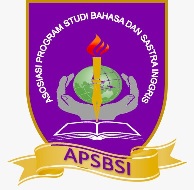How do I sound? Vowel production of multilingual students at Ma Chung University
Abstract
This study aims to evaluate the Indonesian, English, and Mandarin vowel production of Ma Chung University students, a prominent Indonesian institution with a strong emphasis on workforce readiness. Given the university's language offerings encompassing Indonesian, English, and Mandarin, we employed a descriptive qualitative approach in acoustic-phonetic theory. Our respondent pool comprised of 15 PPBM (Chinese language major) students selected based on intermediate proficiency levels in all three languages, as indicated by TOEIC and HSK scores. First and second formant data for monophthongs were recorded in PRAAT tools and the data is compiled on Microsoft Excel, forming the foundation for Vowel Space Area (VSA). The data reveals a notable phenomenon: students' native language (Indonesian) influences their pronunciation of both the second (English) and third (Mandarin) languages. Particularly, English displays a distinct pattern of compressed vowel spread compared to the standard VSA table due to the lingering impact of L1 VSA. This effect accounts for observed vowel anomalies in student pronunciation. Importantly, this L1 and L2 influence is evident in their attempts to articulate L3 (Mandarin) sounds, exemplified by the significant deviation of /ə/ from the VSA. Moreover, students navigate a linguistic shift by modifying phonemes to align with their L1, inadvertently resulting in substantial deviations during English and Mandarin speech production.
Copyright (c) 2023 Ounu Zakiy Sukaton, Didit Prasetyo Nugroho, Aldrin Yohanes Ferdinandus

This work is licensed under a Creative Commons Attribution 4.0 International License.







